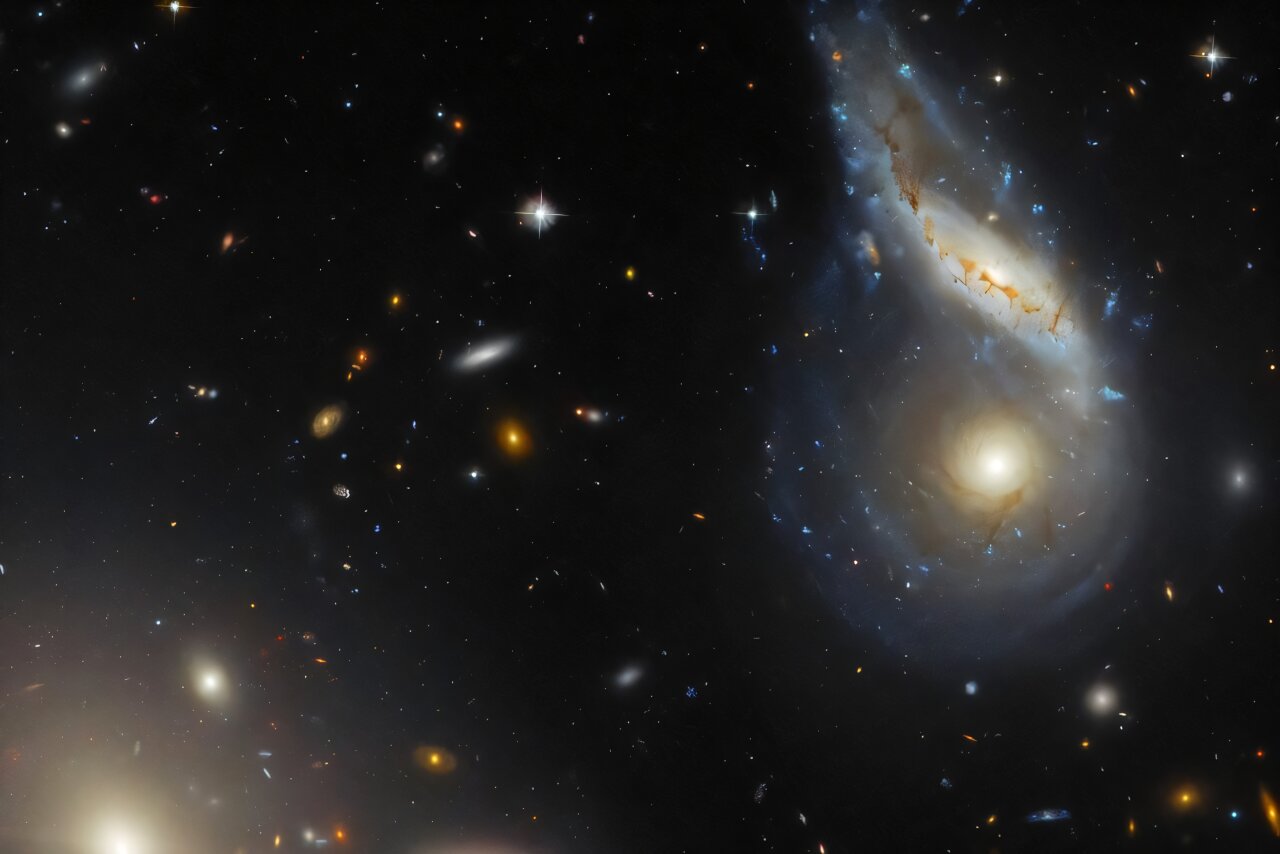If the universe came with an instruction manual, scientists have been flipping through the pages for centuries—mapping the stars, deciphering cosmic signals, and piecing together the origins of galaxies. But what if that manual was missing a chapter? Charles Steinhardt, Assistant Professor of Physics at the University of Missouri, suspects that’s exactly the case. According to his groundbreaking new research, the traditional understanding of how galaxies live and die might be missing a major cosmic twist.
“We’ve always thought galaxies follow a fairly straightforward life cycle,” Steinhardt explained. “Young galaxies are blue and vibrant, full of hot, new stars. Older galaxies fade into a redder hue, having burned through their star-making fuel. But now, we’ve found galaxies that don’t quite follow that rule—they’re red, but they’re still forming stars.”
These puzzling celestial objects don’t neatly slot into the long-standing categories of blue, star-forming galaxies or red, dormant ones. Instead, they occupy a strange middle ground. Steinhardt calls them red star-forming galaxies—and they may be far more common, and more important, than anyone realized.
Rethinking the Cosmic Color Code
Color has long been a shortcut for astronomers to determine a galaxy’s age and activity. Blue galaxies, rich in massive, hot young stars, glow in the short, energetic wavelengths of light. Red galaxies, on the other hand, are typically older, having exhausted their reservoirs of gas and dust. They glow red because only long-lived, cooler, and smaller stars remain.
But Steinhardt’s findings challenge that neat dichotomy. In these newly identified galaxies, the red color doesn’t come from old age or inactivity. Instead, it comes from a very different kind of star formation—one that primarily creates small, low-mass stars that burn cooler and live longer. These galaxies are red and star-forming at the same time.
“It’s not that they’ve stopped making stars,” he said. “It’s that they’re making stars differently—primarily small, red ones. And this process may have been far more common in the universe’s history than we thought.”
This changes everything.
A Bigger Role in the Universe’s History?
Published in The Astrophysical Journal, Steinhardt’s study offers a compelling case that red star-forming galaxies might have been key players in cosmic evolution, not outliers.
If his theory holds, it could explain two long-standing astronomical mysteries:
- Why the observed ratios of black hole mass to stellar mass in galaxies often don’t add up, and
- Why the initial mass functions (IMF) of stars vary between blue and red galaxies.
In other words, our models for how galaxies grow and age might be based on an incomplete sample of galactic types. By overlooking red star-forming galaxies, astronomers may have been underestimating how many stars were actually formed throughout cosmic history.
“The implication is huge,” Steinhardt said. “If these galaxies were common in the early universe, then we’ve been significantly undercounting the number of stars that formed. This would alter our understanding of everything from the timeline of galaxy evolution to the role of black holes.”
Cracking the Mystery of Post-Starburst Galaxies
Steinhardt’s theory doesn’t just fill in gaps—it might help solve a cosmic puzzle that has baffled astronomers for decades: the existence of post-starburst galaxies.
These enigmatic galaxies light up in a brief, explosive phase of star birth—and then suddenly go quiet. For years, the leading theory has been that they’re the result of violent galactic collisions. Two galaxies crash together, triggering a burst of new stars, before their energy is spent and they fade.
But Steinhardt proposes a different origin for at least some of these galaxies: what if they were never blue and bursting to begin with? What if they were slow-burning red star-formers, steadily churning out low-mass stars under the radar?
This theory could mean that many galaxies previously thought to have gone “quiet” might have simply been misclassified. They were never loud in the first place—they were just whispering in red.
Training the Next Generation of Cosmic Detectives
At the University of Missouri, Steinhardt isn’t working alone. He’s bringing undergraduate students into the heart of this cutting-edge research, helping them contribute to a growing redefinition of how we see the universe.
Junior Mathieux Harper, for example, is leading a team to identify other galaxies that might fit this elusive red star-forming profile. Using data from space telescopes and observatories around the world, the group is combing through galactic catalogs, searching for hidden clues in starlight.
Meanwhile, sophomores Carter Meyerhoff and Zach Borowiak are turning their attention closer to home. Using data from the European Space Agency’s Gaia satellite, which is mapping over two billion stars in the Milky Way, their project aims to uncover how these low-mass stars form in our own galactic backyard.
“The Gaia data is like a treasure map,” Meyerhoff said. “We’re using it to find patterns in the types of stars being formed—and whether those patterns match what Steinhardt is seeing in these red galaxies.”
The Next Frontier in Galactic Evolution
This research is still in its early stages, but its implications are profound. If red star-forming galaxies turn out to be as widespread as Steinhardt suspects, they could completely reshape the timeline of cosmic evolution.
Current models suggest a relatively linear lifecycle: galaxies are born blue, burn bright, and fade into red silence. But this emerging picture suggests a more nuanced story—one with side paths, hidden phases, and galaxies that march to their own tune.
“We’ve built our understanding of the cosmos on assumptions that are now being challenged,” Steinhardt said. “And that’s exciting. That’s what science is all about—realizing that the universe is bigger, stranger, and more beautiful than we ever imagined.”
So while the universe might not come with a neatly printed instruction manual, scientists like Steinhardt are writing new pages with every discovery—and inviting a new generation to help fill in the blanks.
Reference: Charles L. Steinhardt, Do Red Galaxies Form More Stars than Blue Galaxies?, The Astrophysical Journal (2025). DOI: 10.3847/1538-4357/adb95b
